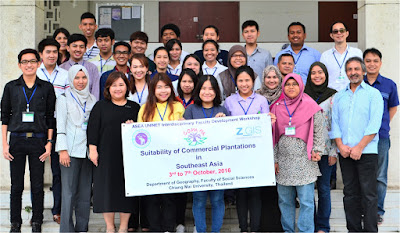 The FFG-ICT of the Future exploratory project SemEO started with a kick-off meeting on October 7, 2016 in Salzburg. The overall goal of SemEO (Semantic enrichment of optical EO data to enhance spatio-temporal querying capabilities) is to investigate conceptual strategies and technical framework conditions to enhance the semantic enrichment of optical EO data. It aims to reach a status allowing human users the querying of EO data on a higher semantic level.
The FFG-ICT of the Future exploratory project SemEO started with a kick-off meeting on October 7, 2016 in Salzburg. The overall goal of SemEO (Semantic enrichment of optical EO data to enhance spatio-temporal querying capabilities) is to investigate conceptual strategies and technical framework conditions to enhance the semantic enrichment of optical EO data. It aims to reach a status allowing human users the querying of EO data on a higher semantic level. The project strives
(1) To semantically enrich optical EO data to a level of basic land cover classes based on a convergence of evidence approach; (2) To investigate spatio-temporal modelling and querying techniques in semantically enriched EO databases using encoded ontologies; (3) To review and test the usability and scalability of array databases and specific implemented data models (data cubes) for spatio-temporal queries in big image databases;
Background: Big earth data is a challenge for efficient and intelligent storage, analysis and distribution. While for other big data domains the main challenge is the sheer amount of data, satellite data needs conversion into information first to unfold their potential as a source for relevant multi-temporal geoinformation. State-of-the-art EO image retrieval is based on simple metadata text information only (acquisition time, target geographic area, cloud cover estimate), without the possibility of higher semantic content-based querying of images or spatio-temporal image-content extraction. SemEO tackles these limitations and builds upon a novel semantic querying system for content-based image retrieval from multi-source big earth data – a result of the successful FFG-ASAP project AutoSentinel-2/3.
Project lead: Dirk Tiede, Z_GIS






